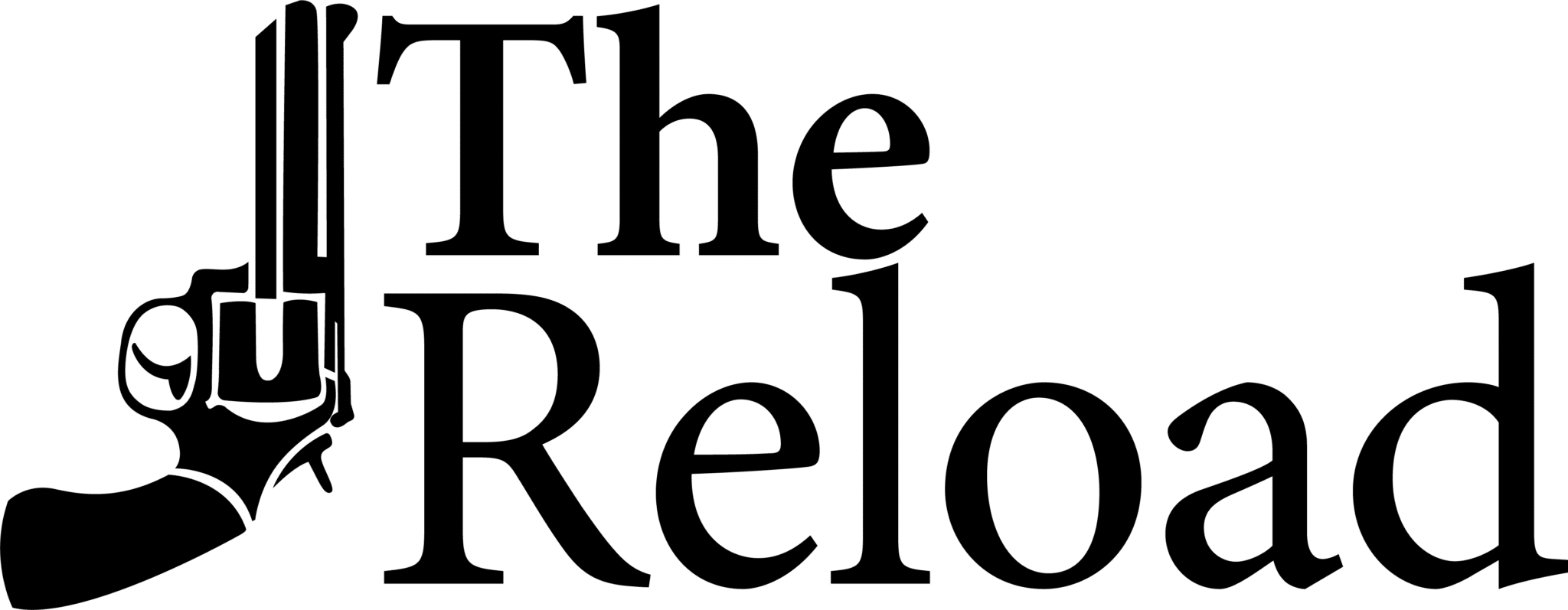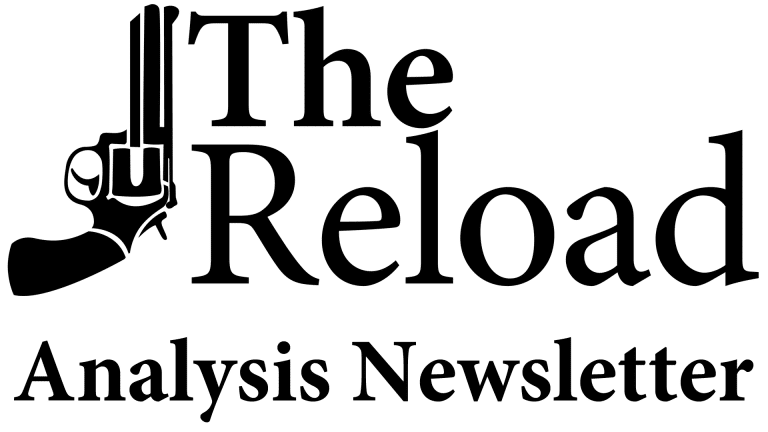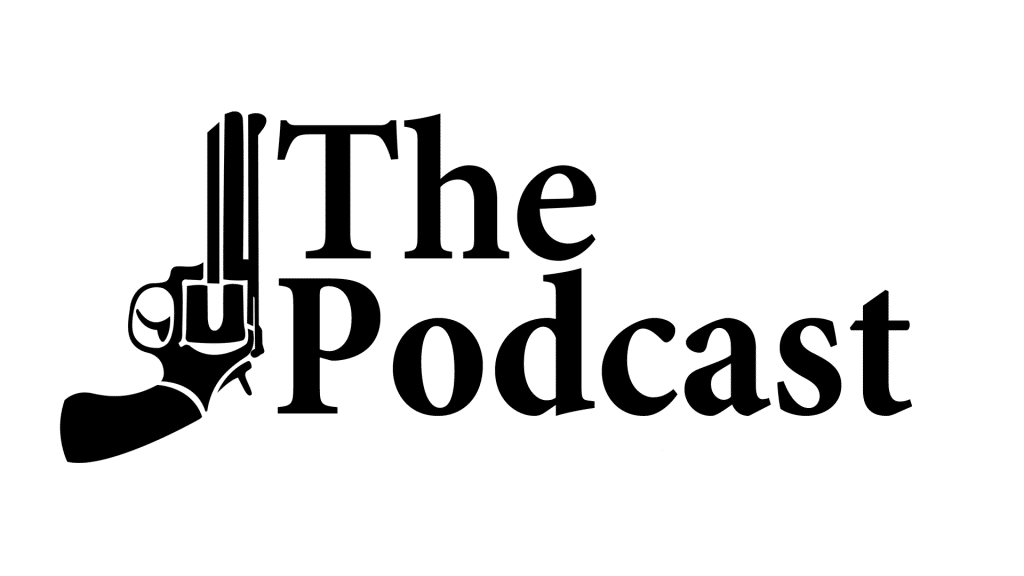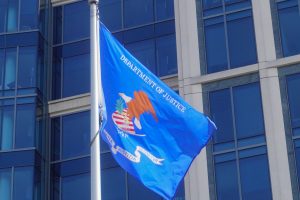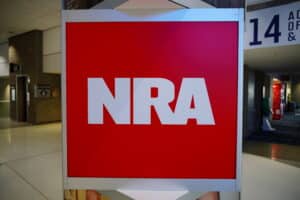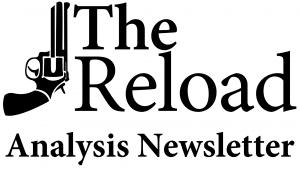This week saw a horrible attack on one of America’s largest college campuses.
The shooting, which left two dead and six more wounded, is the first significant test of President Donald Trump’s gun policy. Contributing Writer Jake Fogleman explains why, at least initially, gun-rights activists will be satisfied with his performance. And why that wasn’t necessarily a given.
Then, I look at how the NRA’s downward spiral has intensified recently, accelerated in part by Trump’s decision to skip its conference for the first time in a decade. I examine whether the group can still turn things around.
Plus, reporter John Petrolino joins the podcast to explain what happened in the NRA’s recent consequential board elections.
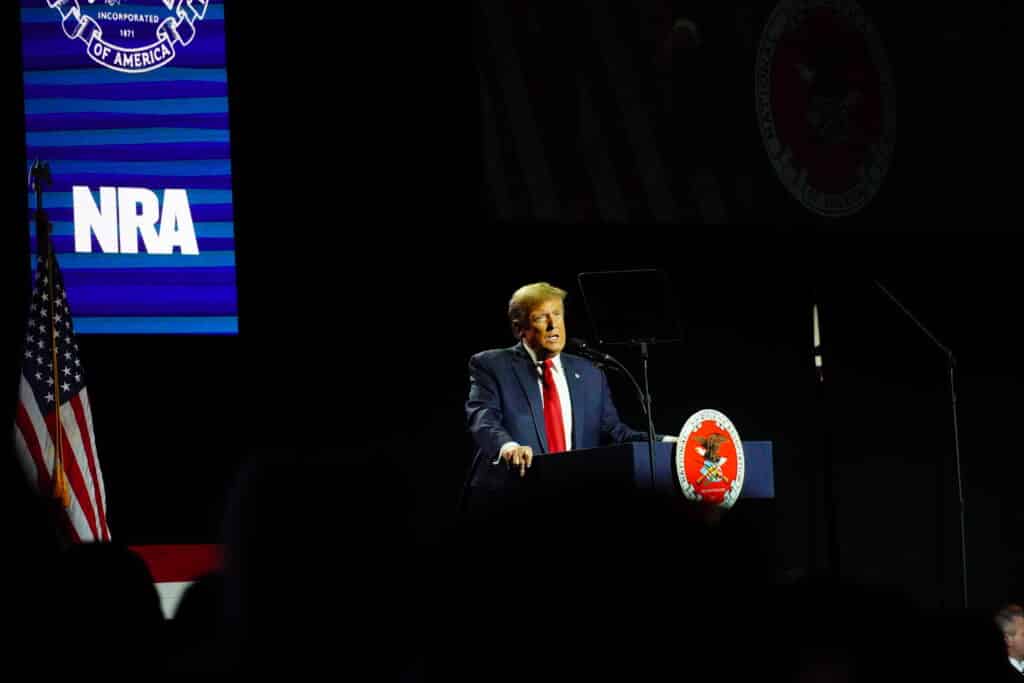
Analysis: Trump Sticks to His Guns Following FSU Shooting [Member Exclusive]
By Jake Fogleman
Faced with the first high-profile shooting of his second term, Donald Trump bucked initial calls for new gun restrictions.
After a 20-year-old student at Florida State University shot and killed two people on campus Thursday and injured six others, the President was asked by reporters in the Oval Office if the incident would prompt him to support any new gun legislation. While he called the attack a “shame,” he blamed the perpetrator rather than their weapons.
“These things are terrible, but the gun doesn’t do the shooting. The people do,” Trump said. “It’s, you know, a phrase that’s used probably too often. I will tell you that it’s a shame.”
He said his administration would “have more to say about it later,” but added that he had no plans to support new gun laws.
“As far as legislation is concerned, this has been going on for a long time,” he said. “I have an obligation to protect the Second Amendment. I ran on the Second Amendment, among other things, and I will always protect the Second Amendment.”
Though a Republican politician stiff-arming calls for stricter gun laws after a shooting is not exactly an atypical occurrence in American politics, Trump is far from the traditional Republican. He has gone further to connect with gun-rights activists than previous Republican presidents by doing things like speaking at the NRA’s annual meetings–at least until this year. But he has also deviated from staunch pro-gun messaging in the aftermath of precisely these types of major public shooting incidents, especially during his first term in the White House.
Following the 2018 Parkland shooting, he publicly considered backing “red flag” legislation, declaring at the time his preference to “take the guns first, go through due process second” in a moment that has become infamous among some gun-rights advocates. In the aftermath of the 2019 El Paso shooting, he reportedly flirted with supporting an “assault weapon” ban behind closed doors, according to the New York Times. He also allegedly floated expanding background checks and raising the age to purchase any gun to 21 after both incidents, according to the Times.
When a gunman wielding a suppressor-equipped handgun murdered 12 people at a municipal center in Virginia Beach in 2019, Trump toyed with the idea of outlawing them in public media interviews. Perhaps most notably, he unilaterally implemented a total ban on bump stocks via ATF rulemaking after the 2017 Las Vegas shooting. At least until the Supreme Court struck down the policy last year.
By contrast, Trump’s initial comments in the wake of the FSU shooting leave no space for new gun control. They’re also in line with his response to being shot in the ear by an AR-15-wielding attempted assassin at a campaign event last summer.
Of course, it’s still too early to say whether that will hold throughout his remaining tenure, and there are at least some reasons to think that the FSU shooting may not be as trying a test as those he faced in his previous term.
It’s an unfortunate and grisly fact that attention and pressure for new gun laws in the aftermath of public shooting incidents tend to scale with body count. The Florida State shooting appears to have claimed two lives thus far, which is still horrible. However, it may not present the same pressure point that the Parkland or Las Vegas shooting did–though the presence of Parkland survivors on the FSU campus during the shooting could result in added attention and political pressure.
It’s also not clear, at least based on preliminary reports from the early investigation into the shooting, what new gun laws would potentially intersect with the incident.
The shooter carried out his attack with a handgun and a shotgun, firearms without any sizeable ban-supporting constituency like the AR-15 or other so-called assault weapons. The attack took place on a college campus where Florida law already prohibits the carrying of firearms. The shooter was also 20 years old, meaning he was both too young under federal law to legally acquire a handgun from a firearms dealer and too young to purchase other firearms under Florida’s post-Parkland 21-year-old minimum age requirement for gun sales.
Finally, the shooter also reportedly sourced at least the handgun used in the attack from his mother, who is an active law enforcement officer. While that raises some potential questions about weapons storage and shared access, law enforcement officers tend to be exempt from even the most restrictive gun-control regimes in the country.
Gun-control groups have tried to turn the political heat up on Trump to do something. But the more limited death toll relative to other mass shootings and lack of obvious gun policy flashpoints likely keeps the pressure relatively low given the circumstances.
Regardless, Donald Trump resisted the initial call for new gun restrictions in the first real test of his second term. That should reassure gun-rights advocates while frustrating gun-control supporters. At least, for now.
Podcast: The NRA After Its Latest Board Election and Trump’s Snub (ft. John Petrolino) [Member Early Access]
By Stephen Gutowski
This week, we’re taking a close look at the state of the NRA.
The nation’s largest gun-rights group is not nearly as large as it was half a decade ago. President Donald Trump just bailed on its conference. However, its civil corruption suit is now over, and its latest board election is in the books.
To give us a detailed view of where the NRA is at today, we’ve got freelance reporter John Petrolino on the show. John often writes for Shooting News Weekly and Bearing Arms. He recently did a great breakdown of the NRA election for the latter.
John said the reformers, who now go by NRA 2.0, won a sizeable victory and should have a significant majority headed into next weekend’s NRA Annual Meeting. Other longtime board members and defenders of former CEO Wayne LaPierre, many of whom are now part of what’s called Strong NRA, did not fare as well. But John noted those who didn’t run under the banner of either group did the worst of all.
He also said some prominent board members, like New York State Rifle and Pistol Association president Tom King, lost their bids. John said he was a bit surprised by some of the results, but he believes the board’s partisanship may not last. He said both sides have made calls for unity, however hard that might end up being.
You can listen to the show on your favorite podcasting app or by clicking here. Video of the episode is available on our YouTube channel. An auto-generated transcript is here. Reload Members get access on Sunday, as always. Everyone else can listen on Monday.
Reload Members can also join the show for a member segment if they’d like. Just reply to your Sunday email and let me know you want to come have a chat!
Plus, Contributing Writer Jake Fogleman and I cover the latest updates in the shooting at Florida State University, including the early response from President Donald Trump. We also talk about Trump’s decision to skip the NRA’s annual meeting for the first time since 2015 and what it says about the group’s current influence. Finally, we discuss a new federal appeals court ruling upholding Massachusetts’ ban on AR-15s and ammunition magazines as well as a new Montana bill cracking down on red flag laws.
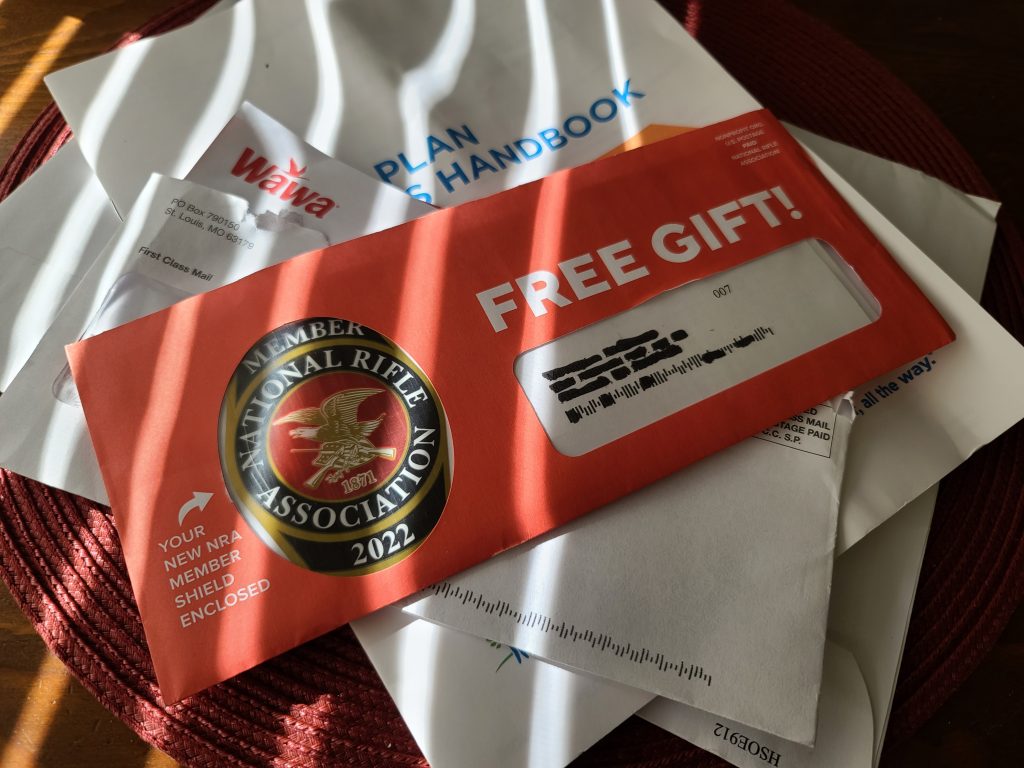
Analysis: Can the NRA Still Pull Out of Its Tailspin? [Member Exclusive]
By Stephen Gutowski
The National Rifle Association is finally on the other side of its New York corruption trial with reformers firmly in control, but its existential crisis is still growing.
This week, President Donald Trump decided to bail on the gun-rights group’s annual conference for the first time since he began his political career in earnest. That blow came shortly after news that the NRA is still shedding members. Plus, two other lawsuits against it present more potential peril.
Can the NRA still survive?
On Tuesday, we broke news that President Trump won’t be speaking at the Annual Meeting. The NRA claimed this is because of scheduling conflicts.
“Though President Trump is unable to attend the NRA’s 2025 Annual Meeting, he is always welcome on our stage to address our members and has done so on nine occasions over the last decade,” the NRA told The Reload. “As an NRA Life Member himself, President Trump remains a steadfast advocate for NRA members and a champion for the right to keep and bear arms. Considering the high level and pace of work being done by his administration on many fronts to make America great again and put America first on the world stage, we can understand that he has a complex, ever-moving schedule.”
That’s also what the NRA claimed when he cancelled on the Georgia rally it planned for him back in October.
The White House didn’t even bother to provide an explanation for why Trump won’t be speaking at the meeting for the first time since 2015. However, my sources indicate the NRA has fallen out of favor with Trump. That’s a pretty bad development for a group that has, for better or worse, hitched its wagon to Trump for a decade.
It’s not hard to see why the NRA’s political power is wavering at the moment. It has lost millions of members. It was outspent in the last election. And things might actually be getting worse.
In a memo reported in several outlets and reviewed by The Reload, NRA President Bob Barr had dire news about continued membership declines despite major leadership changes.
“Unfortunately, membership continues to decline, even with the departure of Wayne LaPierre and The Brewer Law Firm,” he wrote. “In fact, we lost 286,215 members — that’s ~14 % of all non-life members in 2024 alone. The membership continues to decline in 2025.”
As the blog NRA in Danger notes, when combined with the group’s magazine subscription numbers, that implies membership has fallen to around 3 million. That’s down about 800,000 from 2023, 1.3 million from 2022, and about 2.15 million from its peak in 2018.
A remarkable slide that hasn’t abated yet despite the resignation of LaPierre, end of the New York corruption trial, and ascendence of reformers in leadership.
The NRA’s legal troubles aren’t over yet, either. Former president Oliver North, who was forced out by LaPierre at the onset of the group’s corruption scandal, is filing a new suit against the group. The class action suit against the NRA Foundation, led by David Dell’aquila, also recently got permission from a federal judge to move forward.
“If the Letitia James lawsuit was an atom bomb, this lawsuit is the hydrogen bomb; it’s a factor of 10,” Dell’aquila told The Reload.
He’s accused the NRA of misleading him and other donors about how their money would be used. Instead of going to charity efforts by the Foundation, his suit claims the donations were knowingly funneled to the NRA’s other arms, and some of it was actually spent on LaPierre’s luxurious personal expenses.
US District Judge William L. Campbell Jr., a Donald Trump appointee, refused to dismiss any of the claims against the NRA.
“Plaintiffs plausibly allege that the letters represent that the funds donated will be used for ‘The NRA Foundation’s Leadership Fund Endowment’ and that the funds were not used for that purpose. Instead, donated funds were ‘routinely transferred to the NRA without oversight and were then used for illicit purposes,’” Judge Campbell wrote in Dell’aquila v. NRA. “Although the ultimate question of whether the letters contain misrepresentations concerning the use of funds will be for the trier of fact, at this juncture, viewing the allegations in the light most favorable to Plaintiffs, the mailed communications could be viewed as a solicitation of funds for the NRA Foundation’s Leadership Fund Endowment.”
Dell’aquila said he’s unsatisfied with the reforms the group has already implemented since the end of the New York case.
“I mean, nobody’s gonna take their word for it at this point,” he said.
He still wants to see the board turned into an advisory committee, a smaller executive group take over control, and refunds for donors who were misled. He said he’s committed to that outcome.
“If they want to settle, fine. If they don’t want to settle, we’re more than happy to take this thing all the way to its conclusion with a jury.”
Still, it’s not all bad news.
The NRA remains the largest gun group on either side of the political divide in the world. It still has millions of dues-paying members. And it just regained some prominent backers.
“The National Rifle Association has led the fight to keep and bear arms, but, as you know, they simply lost their way, and many people like me took a step back and refused to condone their behavior with our time and resources,” Marty Daniel, founder of Daniel Defense, told customers in a February video. “The message was heard loud and clear, and now change is on the way. With former leadership gone and new leaders at the helm, there’s a plan in place to revive the organization and restore trust with NRA members and all gun-owning Americans.”
Trump has started to take some pro-gun actions as well. He ordered a review of executive branch gun policy, ended the Biden-era “zero tolerance” ATF policy for gun dealers, and moved to restart the gun-rights restoration process. He’s also resisted the call for new gun laws in the wake of the first school shooting to garner significant media attention, which has caused him to waver in the past.
He’s also notoriously fickle when it comes to who is in and out of his good graces. While it’s unlikely he changes his mind tomorrow and decides to show up at the Annual Meeting, it’s not impossible. Down the line, it’s even more likely he could come back around on the NRA, especially if it can show it’s still a formidable political force.
That could still happen.
The NRA’s board election results just recently came in, and the reformers now have a larger majority on the board than ever before. That will likely result in a more unified front from the group’s leadership. That should make it easier for the group to implement changes that add transparency.
Of course, the big question is whether they can change fast enough to win back members.
That’s it for now.
I’ll talk to you all again soon.
Go Birds,
Stephen Gutowski
Founder
The Reload
